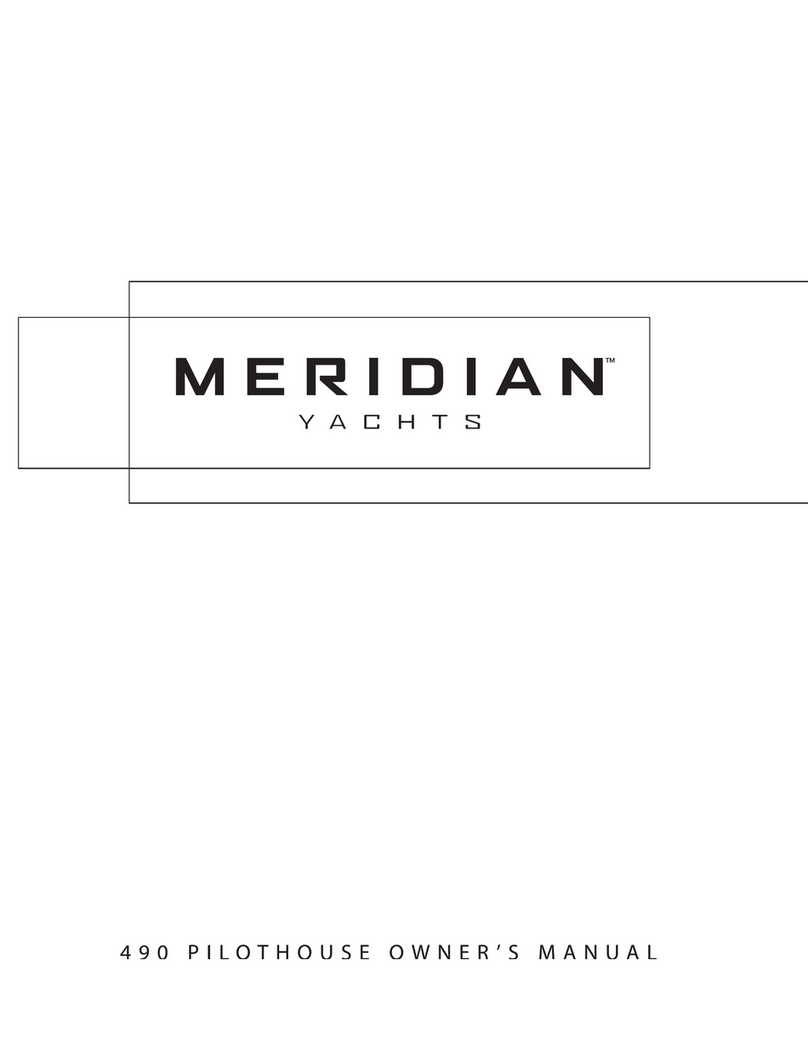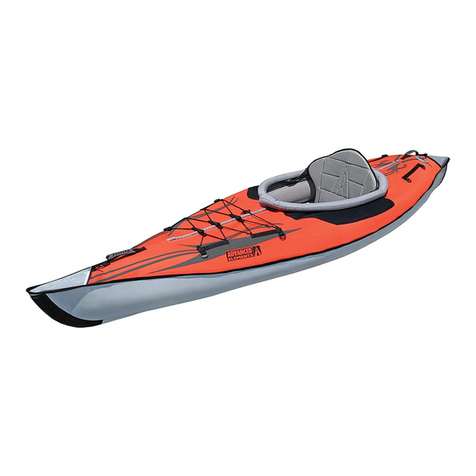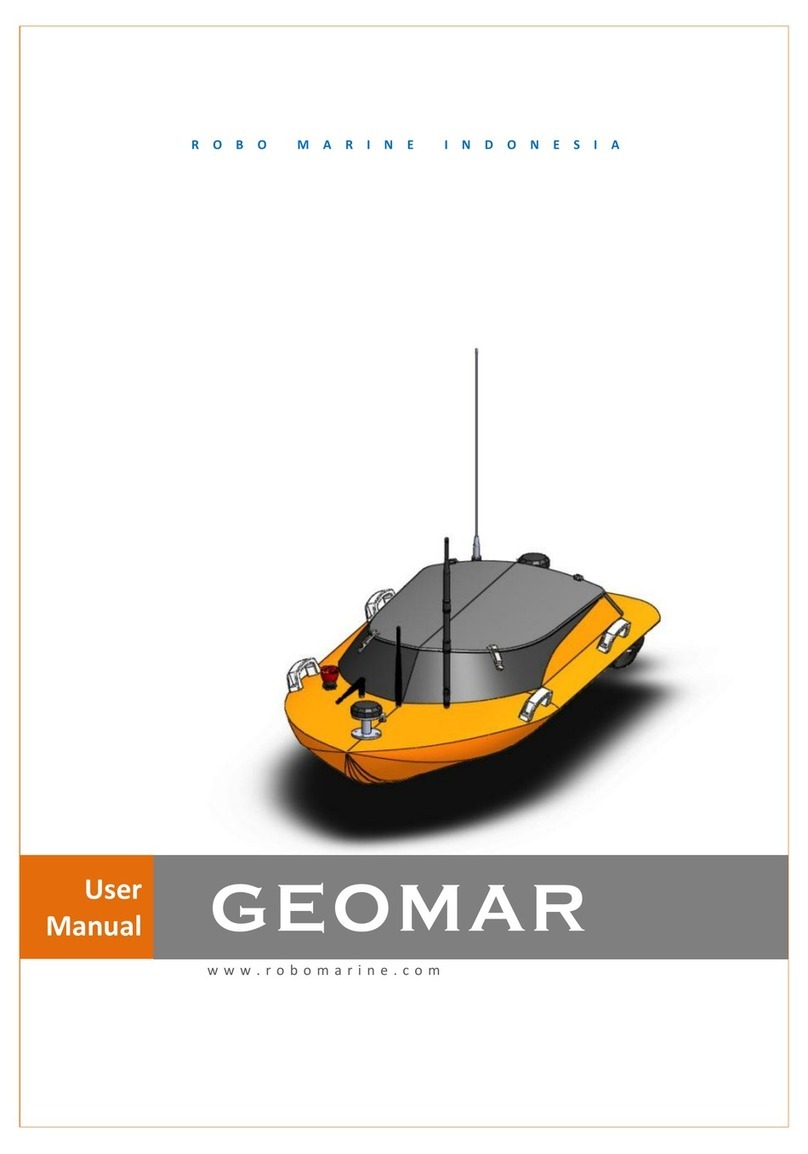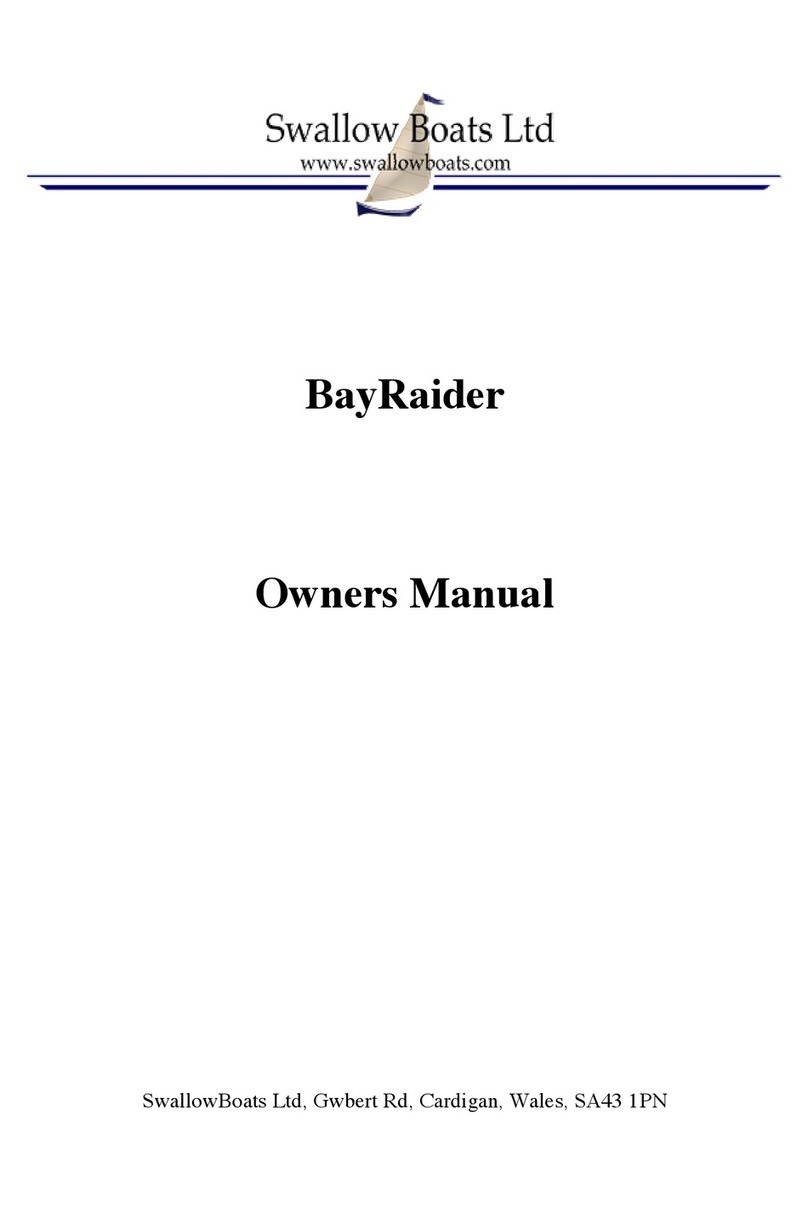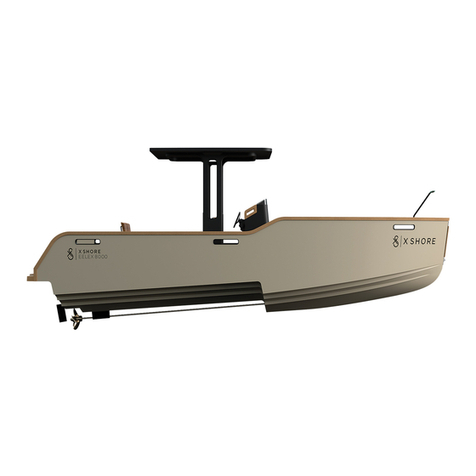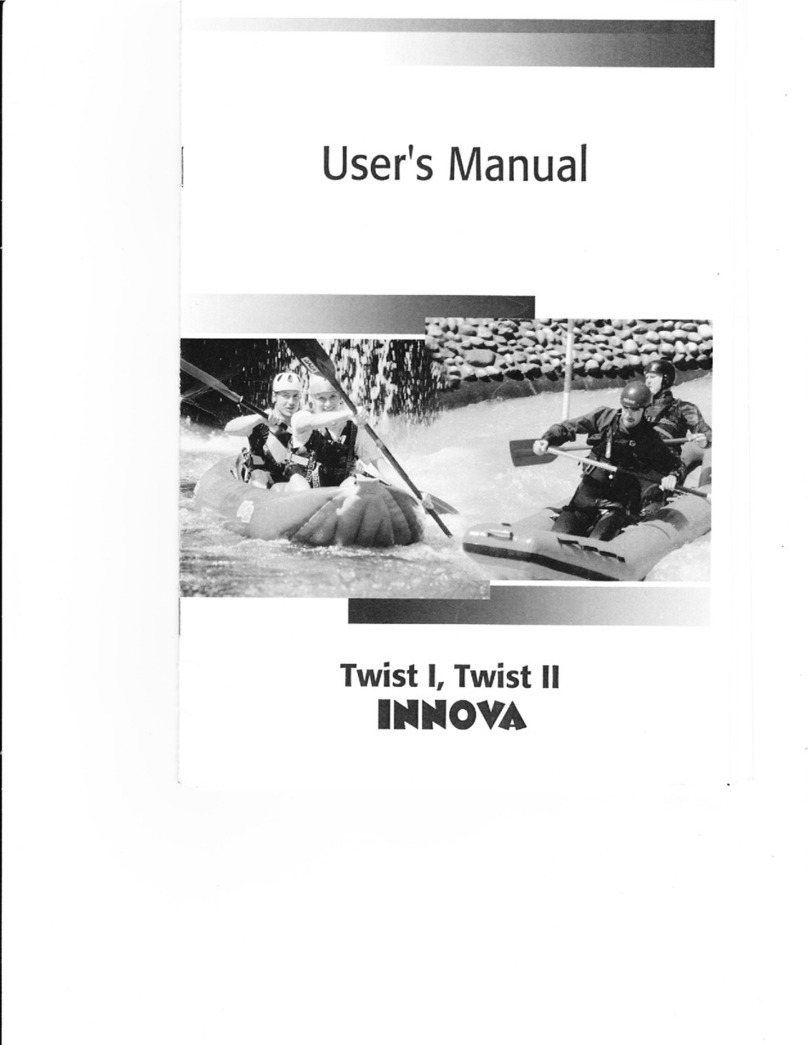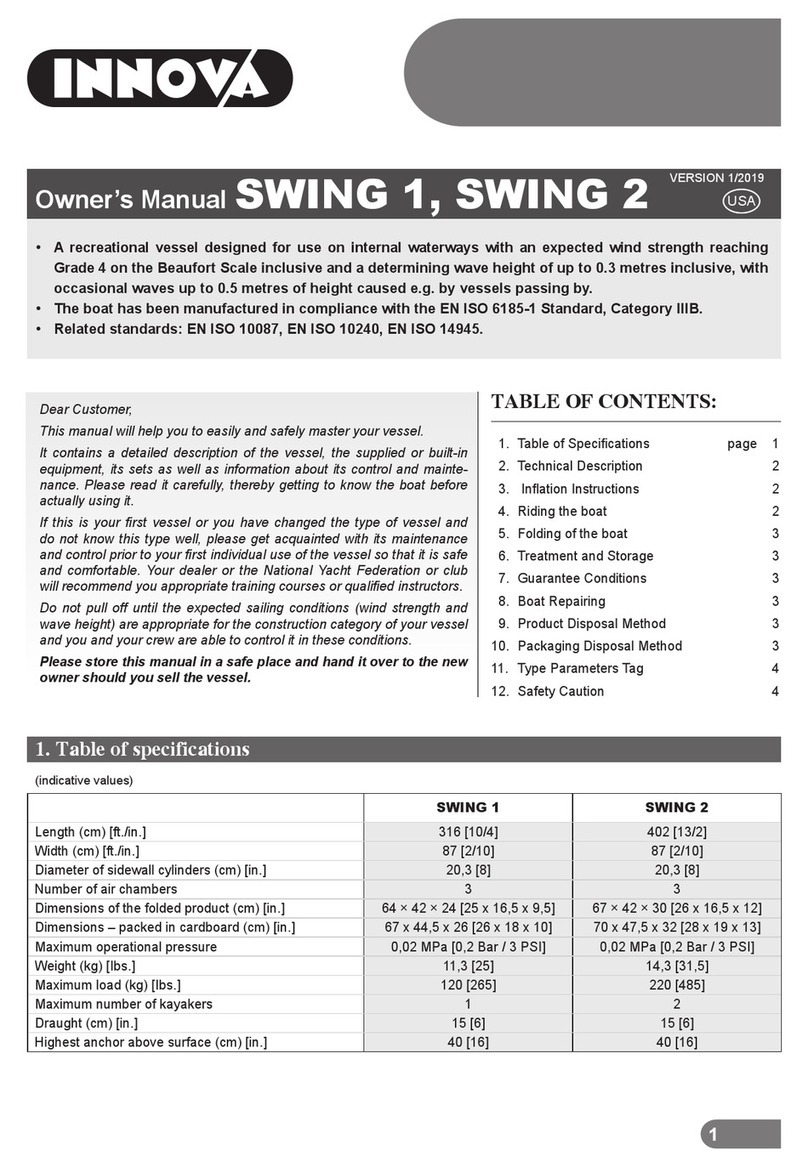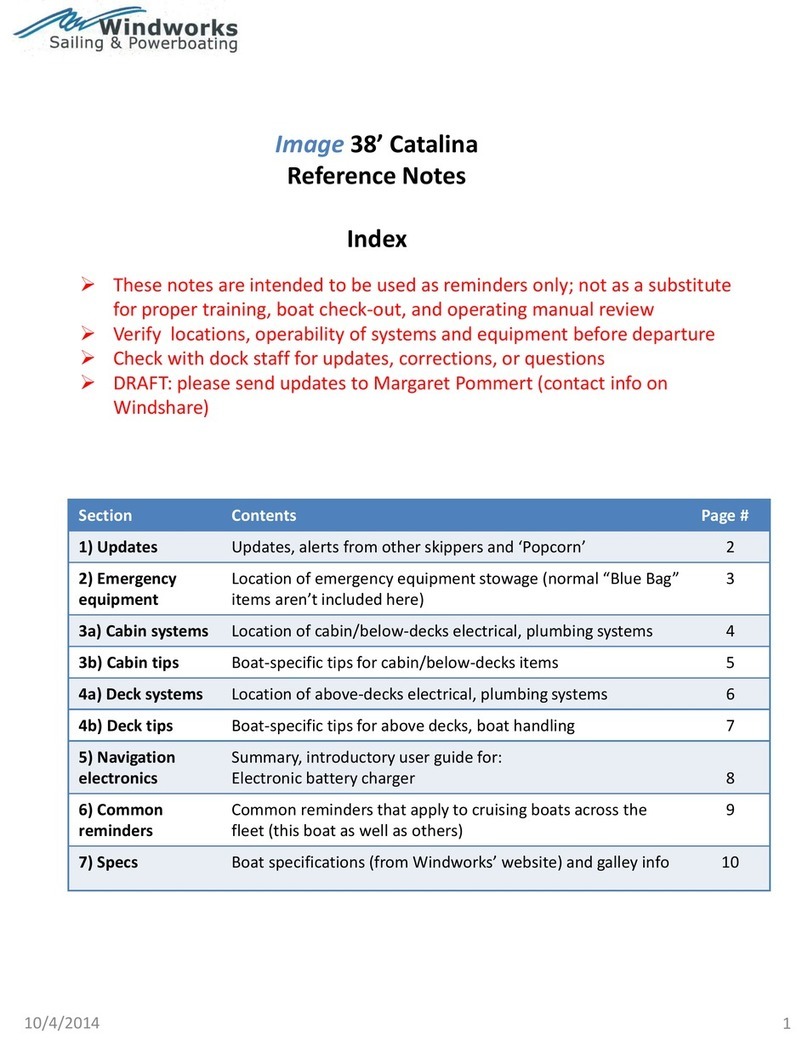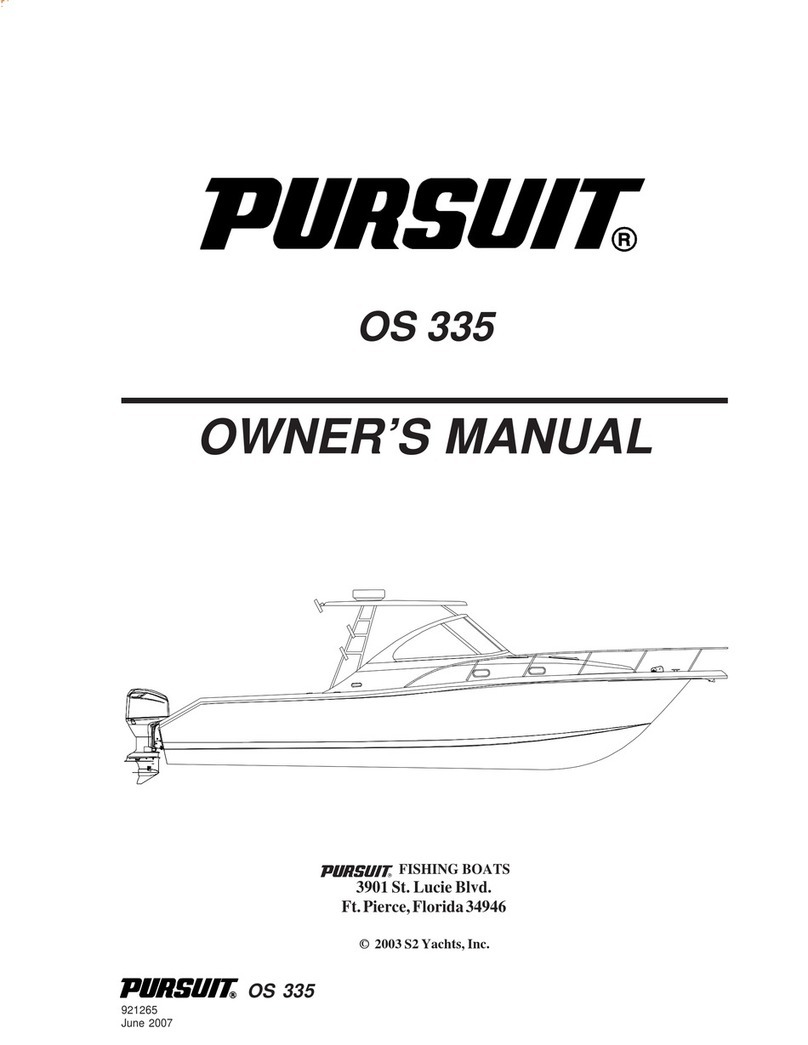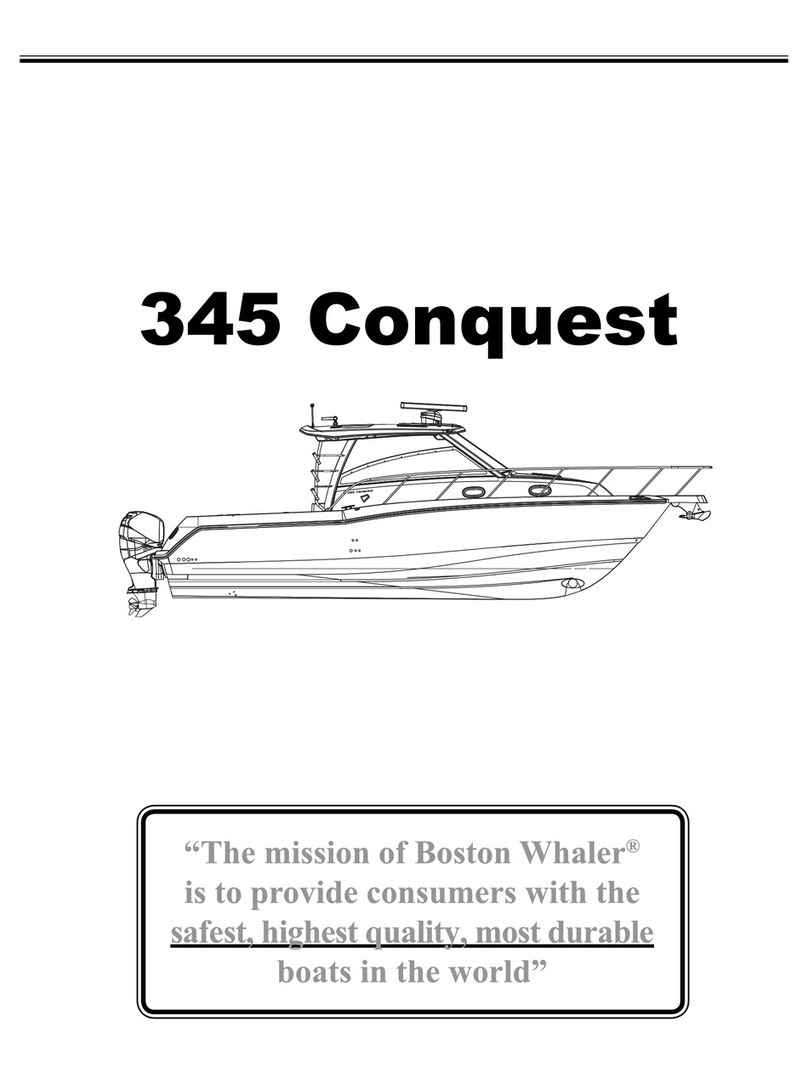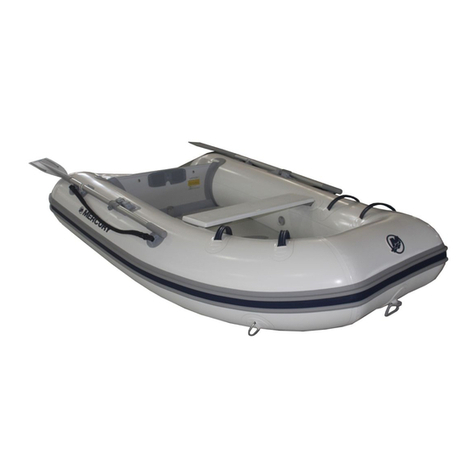
2
2. Technical description – see Fig. 1
1. side cylinder
2. bottom
3. PUSH/PUSH valve – enables infl ation/ exhaustion, pres-
sure regulation and measuring of pressure by a manom-
eter (see Fig. 2)
4. Pressure relief valve
5. Footrest
6. Screw valve for small chambers (seats, footrests, etc.)
7. Handle
8. Manufacturer’s data plate
9. Yellow „WARNING“ label
10. Elastic rope net
11. Footrest and seat anchorage mounts (detail A)
12. Tracking fi n mounting point
13. Infl atable seat with backrest
14. Rest mount on the cylinder (detail B)
15. Seat anchorage point on the fl oor (detail B)
16. Seat anchoring strap (detail B)
17. Plastic clip on the seat (detail B)
EQUIPMENT SUPPLIED WITH THE KAYAK:
Transport bag, tracking fi n, tie strap for a packed kayak, sponge
in a mesh bag, operating instructions and warranty certifi cate,
repair kit containing glue, patches, and valve (stem) adaptor.
3. Instructions for the inflation of the kayak
Unfold the kayak. If you want to use the direction fi n, insert
it in the fi xture at the bottom (12). Infl ate the footrest before
mounting it. For the way of operating the valve (6) see Fig.
2. Attach the footrest (5) to the anchorage mount (11) on the
fl oor. See Detail A for correct routing of the strap through the
clip. The air chambers shall be infl ated in the following order:
side drums (1), bottom (2). For the infl ation it is favourable to
use a foot pump or piston pump with using the valve adapter
– see Fig. 2b (the adapter is a part of the gluing kit). Before
the start of infl ating, check the condition of the valves. Set the
valves to the Closed position. For the way of operating of the
valve see Fig. 2. Infl ate the air chambers until they are fi rm but
not completely stiff . The air chambers should provide a feeling
comparable to squeezing a ripe orange. You can check the
exact operating pressure by using a suitable pressure gauge
(optional accessory) – see Figure 2a. The wrench for the in-
stallation of the valve – see Fig. 2c – is an optional accessory.
ATTENTION
The maximum operational pressure in air chambers is
0.02 MPa. If the ambient temperature increases (e.g. ow-
ing to sunlight), the pressure in the air chambers of the
canoe can rise rapidly. We recommend releasing some
air from all air chambers of the canoe after pulling it out
of the water. This will prevent possible destruction of
the air chambers. However, do not forget to continuously
check air pressure in the chambers afterwards, too. A cor-
responding reduction in operating pressure is up to 20%
within 24 hours.
ATTENTION
When using the boat, always seal the valves with their
valve caps. This will keep dirt out of the valves. Dirt can-
cause leaky valve seals.
4. Using the kayak
The TWIST kayak is a single-seat infl atable kayak. Whenever
the kayak is used on waterways, Waterway Traffi c Rules
should be observed.
The operation of the TWIST infl atable kayak does not require
any licence, provided that the people who operate the kayak
know the techniques of small boat operation to the extent re-
quired for its operation as well as the valid navigation rules of
the particular country.
The TWIST kayak is designed for use on rivers up to Diffi culty
Grade WW 1. It can also be used on lakes. The kayak is par-
ticularly suitable for beginners due to its simple and compact
design and easy manoeuvrability. The space on the stern can
be used for storing baggage. When touring, one person sits
on the seat, leaning against the backrest with their heels sup-
ported on the footrest. The shape of the foot-rest corresponds
to diff erent heights of kayakers, who can hence easily fi nd
the position most comfortable for them without further set-
up. The person travelling in the kayak should wear a fl otation
life-jacket. Use a double-blade kayak paddle with a length of
(210–220) cm.
ATTENTION
Prior to using the kayak, check whether it is necessary
to observe any special regulations, restrictions or rules
connected with the river, surface of water or area in
which you intend to use it.
The boat is not designed to be towed behind motor-
boats, nor may it be towed otherwise, dragged or in any
way subjected to unusual stress. Sharp edged or point-
ed items carried in the kayak should be safely wrapped.
Place all valuables into a waterproof container and
fasten it to the kayak.
Over time, sunlight adversely aff ects the rubber coating
of the boat; therefore, it is advisable to store the boat in
shade each time after use.
CAUTION:
On large surfaces of water (seas or lakes), pay atten-
tion to water currents and off -shore breezes. Currents
and breezes may make it impossible to return to shore.
The Twist kayak should not be used in challenging
conditions, such as in decreased visibility (night, fog
or rain).
Characteristics of Diffi culty Grade WW 1 – Easy:
• Regular waterfl ow and low and regular wave formation,
small rapids, easy obstacles and frequent meanders with
quick waterfl ows.
Subjective assumptions for riding wild waters graded WW 1:
• A knowledge of all basic strokes, both forwards
and backwards, steering and control of the kayak.
The ability to realistically evaluate the diffi culty posed and
the actual state of the river’s waters. A knowledge of ele-
mentary life-saving techniques. Physical fi tness and swim-
ming skills are necessary during long trips.
Technical equipment for WW 1:
• All types of open boats; fl otation life-jackets with a mini-
mum displacement of 7.5 kg.

